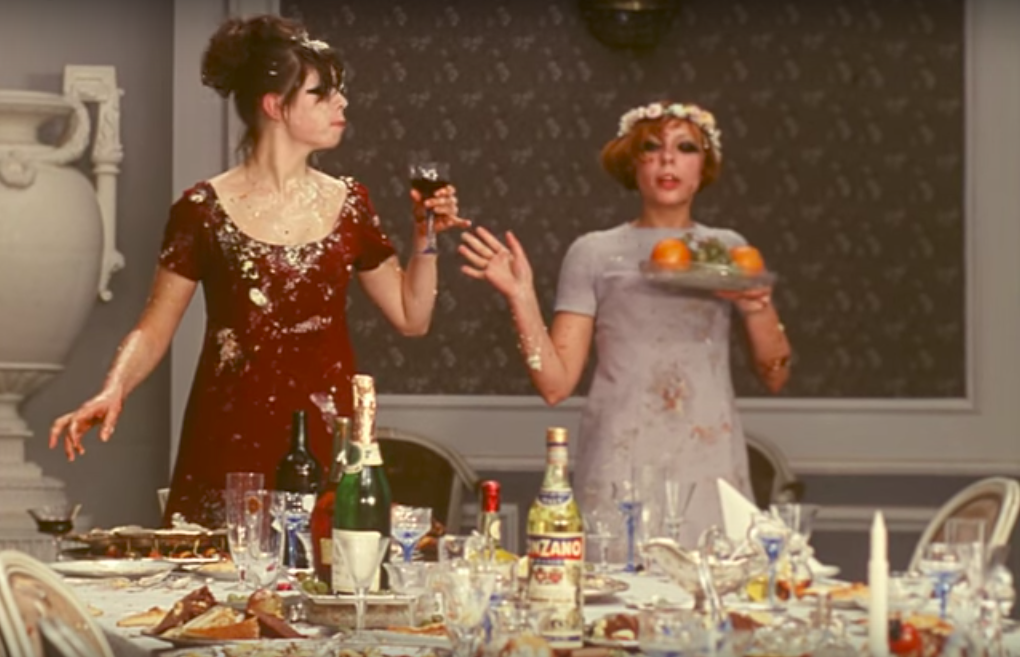Vera Chytilova’s Daisies: The Rebellion of Food Fights and Fashion
Words by Ella Gauci
Imagine banning a film because it depicted a food fight that was deemed as wasteful. Vera Chytilova’s 1966 film Daisies was banned for just that under Czechoslovakia's strict Soviet rule. The subversive film used its abstract, hedonist, and sometimes downright bonkers visuals in order to become a powerful antagonist to what the Soviet regime believed was acceptable for women.
Still from Daisies (1966)
Daisies follows the tale of Marie I and Marie II, young girls whose primary focus in life is to eat lots of food and annoy men (sounds pretty ideal if you ask me). The film lacks any sort of cohesive plot other than the escapades of the two women, with the style alternating between sequences from black and white to vibrant colour. It is arguably a protest film against the structured and oppressive expectations of the Soviet regime on both film and women.
Having worked as a model herself, Chytilova’s use of fashion within the film is perhaps one of the most striking examples of her experimentation that placed her at the forefront of the Czech New Wave of cinema. The two women often are scantily clad, swapping outfits throughout takes to display the interchangeability of them to the men they try to seduce. There is a striking juxtaposition between the babydoll dresses and flower crowns and their hedonistic and borderline masochistic interests in humiliating and annoying older men.
Marie I and Marie II in Daisies (1966)
Perhaps my favourite scene in the film demonstrates Chytilova’s innovation of cinema as she depicts the two girls chasing each other with a large pair of scissors. So begins a collage-like scene where heads are removed from bodies, limbs chopped off like paper, and floating heads dominate the screen unfazed. The two women almost remind me of little girls cutting out pictures of women in magazines. Chytilova blends both her artistic imagination and political protest to create a scene that is confusing but clearly politically motivated. She attacks the way that women’s bodies are often dissected by visual media, however this time the scissors are placed in the hands of the women themselves.
Collage scene in Daisies (1966)
The food fight scene at the end is perhaps what this film is most known for. It is a completely senseless and epic fight involving a fancy buffet that has been laid out for an event. The film was banned in 1968 but after the ban on the film was lifted, Chytilova added a dig of monumental proportion to the final frame of the film directed at the Soviet regime - "This film is dedicated to all those whose sole source of indignation is a trampled-on trifle." She attacks the institution that cared more about censorship than about its people, a regime that seemingly was more offended by a ‘trampled-on trifle’ than the starving masses.
Marie I and Marie II in the food fight scene (1966)
She was a rebel through and through, and while she didn’t explicitly call herself a feminist artist, the sentiment of female liberation from the claustrophobic expectations of Soviet men runs throughout this film. At first glance, it can be easy to get lost in the visual explosion of jump cuts and bizarreness, but under the surface of the film a very real rebellion is taking place. One that is primarily catalysed by phallic shaped food, dresses, and the almost satanic laughter of the two women.




